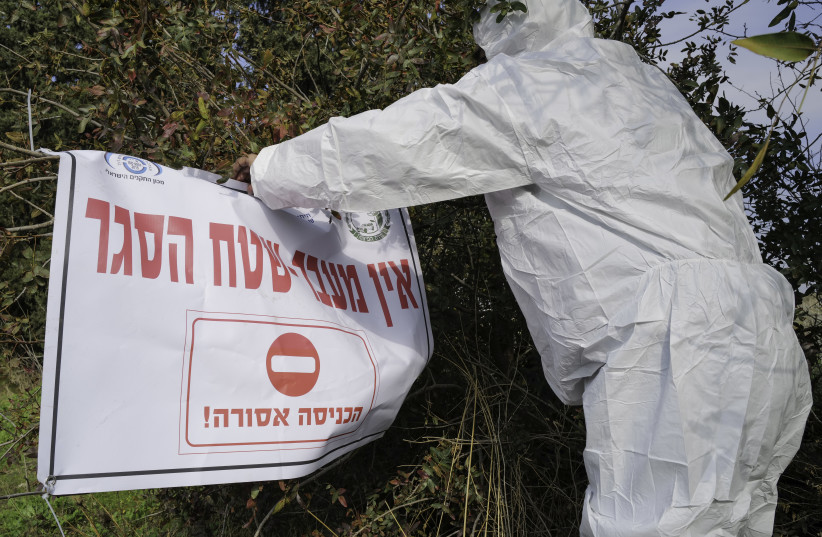Dairy cows in Texas, Kansas, and New Mexico fell sick due to the bird flu, the latest case of the virus spreading to mammals, the US Department of Agriculture, the Food and Drug Administration, and the Centers for Disease Control and Prevention (CDC) said Monday.
The cattle experienced decreased lactation, a low appetite, and other symptoms. Unpasteurized samples of milk from the cattle collected from two farms in Kansas and one in Texas, as well as a nasal swab from a cow in Texas, tested positive for the bird flu over the past month.
Dead wild birds were also found at some of the farms, with the USDA saying that, based on findings from Texas, the virus was likely spread to the cows through wild birds.
Unlike poultry, the cattle do not need to be culled and are expected to make a full recovery.
Initial testing by the National Veterinary Services Laboratories did not find “changes to the virus that would make it more transmissible to humans,” with the USDA saying the risk to the public remains low.

Federal and state officials are working to conduct additional testing and sequence the genome of the samples to get a better understanding of the situation. The USDA informed the World Organization for Animal Health (WOAH) on Tuesday that the cattle were infected with a sporadically detected four gene reassortant of the H5N1 subtype of the avian influenza. The new genotype, known as B3.13, is a descendant of the previously predominant genotype B3.2.
“No markers for mammalian adaptation nor antiviral resistance were observed,” said the USDA report to WOAH. “This is an evolving situation - additional work and studies are in process.”
The USDA stressed in a press release that there is “no concern about the safety of the commercial milk supply,” and these detections do not pose a risk to consumer health. Any traces of the virus should be killed during the pasteurization process.
Gregory Gray, an epidemiologist at the University of Texas Medical Branch, told Science magazine that the discovery of the infected cows was “worrisome.”
“Who knows what’s next? It’s disturbing. We need to figure this thing out, because if the virus continues to change, it could move into other species, including humans. It may be in humans already. We just have to keep a pulse on it,” said Gray.
Gray noted that while cattle have been infected by all types of influenza in the past, this is the first time cows have gotten sick.
Joe Armstrong, DVM, a cattle production expert with the University of Minnesota, told the University of Minnesota Extension's Moos Room podcast that unexplained illness has been reported in dairy herds in Texas since late January.
According to Armstrong, health officials still aren’t sure bird flu is the only cause of the symptoms in the cows and more testing is needed. About 10% of the herds of farms where outbreaks were reported were affected, mostly in older cattle.
Researchers are also still unsure if the virus is spreading between cattle or not.
Discovery comes not long after goat was infected with bird flu
The discovery of the infected cows comes not long after a goat was found to be infected with the H5N1 subtype of bird flu at a farm in Minnesota, marking the first such case of bird flu in a domestic ruminant (cattle, sheep, goats, and their relatives) in the US.
In February, bird flu was found in poultry at that farm. The birds were gotten rid of, but earlier in March, the owner of the farm noticed unusual deaths among baby goats at the farm. The goats and birds were in a shared space and had a shared water source.
Only one of the goats on the farm was infected, and the rest tested negative.
“This finding is significant because, while the spring migration is definitely a higher risk transmission period for poultry, it highlights the possibility of the virus infecting other animals on farms with multiple species,” said Minnesota State Veterinarian, Dr. Brian Hoefs, at the time. “Thankfully, research to-date has shown mammals appear to be dead-end hosts, which means they’re unlikely to spread HPAI further.”
Outbreaks of avian influenza have been increasingly reported in mammals as the virus has continued to spread around the world in the past few years.
Since 2021, Europe and the Americas have been suffering from a nearly continuous outbreak of H5N1 avian influenza, which has been described as "the largest-ever" on the three continents. The virus has affected tens of millions of birds and thousands of mammals worldwide. Outbreaks of the virus have also become more common in Africa and Asia in the past year and have even spread to Antarctica in recent months.
The World Organization for Animal Health (WOAH) noted earlier this month that, while estimates vary, about 485 bird species and 37 mammal species have been infected with avian influenza since 2021. Only the Pacific Islands, Australia, and New Zealand have been spared from the virus.
“The loss of wildlife at the current scale presents an unprecedented risk of wildlife population collapse, creating an ecological crisis,” noted WOAH.
